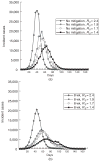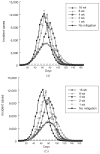Simulating school closure strategies to mitigate an influenza epidemic
- PMID: 20035236
- PMCID: PMC2901099
- DOI: 10.1097/PHH.0b013e3181ce594e
Simulating school closure strategies to mitigate an influenza epidemic
Abstract
Background: There remains substantial debate over the impact of school closure as a mitigation strategy during an influenza pandemic. The ongoing 2009 H1N1 influenza pandemic has provided an unparalleled opportunity to test interventions with the most up-to-date simulations.
Methods: To assist the Allegheny County Health Department during the 2009 H1N1 influenza pandemic, the University of Pittsburgh Models of Infectious Disease Agents Study group employed an agent-based computer simulation model (ABM) of Allegheny County, Pennsylvania, to explore the effects of various school closure strategies on mitigating influenza epidemics of different reproductive rates (R0).
Results: Entire school system closures were not more effective than individual school closures. Any type of school closure may need to be maintained throughout most of the epidemic (ie, at least 8 weeks) to have any significant effect on the overall serologic attack rate. In fact, relatively short school closures (ie, 2 weeks or less) may actually slightly increase the overall attack rate by returning susceptible students back into schools in the middle of the epidemic. Varying the illness threshold at which school closures are triggered did not seem to have substantial impact on the effectiveness of school closures, suggesting that short delays in closing schools should not cause concern.
Conclusions: School closures alone may not be able to quell an epidemic but, when maintained for at least 8 weeks, could delay the epidemic peak for up to a week, providing additional time to implement a second more effective intervention such as vaccination.
Figures
References
-
- Dalton CB, Durrheim DN, Conroy MA. Likely impact of school and childcare closures on public health workforce during an influenza pandemic: a survey. Commun Dis Intell. 2008;32(2):261–262. - PubMed
-
- Markel H, Lipman HB, Navarro JA, et al. Nonpharmaceutical interventions implemented by US cities during the 1918–1919 influenza pandemic. JAMA. 2007;298(6):644–654. - PubMed
-
- Trust for America’s Health. H1N1 Challenges Ahead. Washington, DC: Trust for America’s Health; 2009.
-
- Glezen WP. Emerging infections: pandemic influenza. Epidemiol Rev. 1996;18(1):64–76. - PubMed
-
- Schoch-Spana M. Implications of pandemic influenza for bioterrorism response. Clin Infect Dis. 2000;31(6):1409–1413. - PubMed
Publication types
MeSH terms
Grants and funding
LinkOut - more resources
Full Text Sources
Medical



